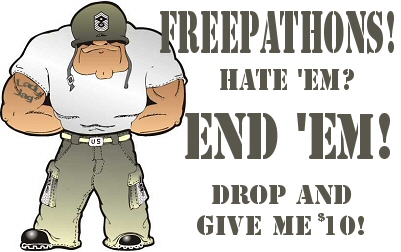Lou Donaldson, Pioneer Of Soul-Jazz, Has Passed Away
Udiscovermusic ^ | November 11, 2024 | Charles Waring
Posted on 11/14/2024 1:36:45 PM PST by nickcarraway
Known as ‘Sweet Poppa Lou,’ Donaldson blended the lyricism of swing-era hornblower Johnny Hodges with the quick-fingered athleticism of bebop architect Charlie Parker.
Lou Donaldson, a pioneer of soul jazz, has passed away. Known as “Sweet Poppa Lou” – a reference to the distinctive, honeyed tone he pulled from his alto sax – Donaldson blended the lyricism of swing-era hornblower Johnny Hodges with the quick-fingered athleticism of bebop architect Charlie Parker. More than anything else, though, Donaldson viewed himself as a crowd-pleaser: His music’s deep, bluesy soulfulness and emotional directness allowed him to connect with a wider audience than many of his jazz contemporaries — especially when he started fusing his music with R&B and funk sounds in the 1960s and 70s, landing several albums in the US charts.
Donaldson cut his teeth playing as a sideman to bebop heavyweights like Milt Jackson, Thelonious Monk, and Art Blakey in the 1950s. But it was the 50 albums he recorded between 1952 and 1999, many of them for the iconic Blue Note label, that would bring him greater renown. In the early 1960s, he joined organist Jimmy Smith, pianist Horace Silver, and alto saxophonist Cannonball Adderley in popularizing a new genre called soul jazz, a simplified, more accessible sound that drew heavily on gospel music; later in the same decade, he absorbed the funky rhythms that soul singer James Brown was bringing to American R&B. “I was the first jazz musician to do something like that,” he told jazz writer Les Tomkins in 1981. “But it sold, man. I made a lot of money — no regrets about that.”
It was during this fertile period that Donaldson released Alligator Bogaloo, a ground-breaking combination of jazz and funk that would become the most commercially successful record of his career. Its infectious, danceable sound — along with that of other records he made during the same era — would experience a second life on numerous hip-hop albums years later, sampled by Kanye West and De La Soul alike.
Donaldson’s contemporaries remember him as a straight-shooter with a mischievous sense of humor — a man who wasn’t afraid to criticize his peers in interviews, even if they were revered jazz icons. In the interview with Tomkins, he declared that saxophonist John Coltrane’s music had “nothing to do with jazz”; in 2006, he told critic Ted Panken that free jazz maven Ornette Coleman’s work was “not what we’d call real jazz music.” In both cases, he was taking issue with his peers’ lack of fidelity to the blues, which he believed to be the foundation of jazz expression, a conviction that went hand in hand with his contention that this music should be something that everyone could understand and relate to. “If you can’t play the blues, you can’t play no jazz,” he declared to journalist Larry Appelbaum in 2009.
Despite his purist tendencies, Donaldson saw himself as an entertainer whose primary responsibility was to show his audience a good time. “I was playing whatever music people liked,” he revealed to Jazz Wax in 2010. “I used audience reaction as a barometer for what I would go into the studio and record.”
Early Years
Born in Baden, North Carolina on November 1, 1926, Louis Andrew Donaldson was the second of four children. His father, Andrew, sold insurance in addition to working as a preacher; his mother, Lucy, was a piano teacher. At first, Donaldson resisted his mother’s attempts to teach him the instrument; unlike his other siblings, he was more interested in sports. “After watching my mother teach kids how to play, it seemed just a drag to me,” he told Les Tomkins. “I was a baseball player; I didn’t even like music — I hated it.”
His feelings changed when his mother bought him a clarinet at age 15 — he’d been suffering from asthma, and she thought it would strengthen his lungs. The hobby stuck. When he enrolled at North Carolina Agricultural and Technical State University in Greensboro to study political science three years later, he continued honing his technique during his free time, playing sheet music of songs by swing bandleaders like Benny Goodman and Artie Shaw.
After being drafted into the US Navy in 1945, he switched to the alto sax when he decided to audition for a military band and discovered they didn’t need a clarinet player. “I wanted to make sure I got in the band,” he revealed to All About Jazz. “I had never even touched an alto sax before.” But it wasn’t until he caught a live set by virtuoso hornblower Parker, during a weekend trip to Chicago, that he decided to pursue the instrument in earnest. “Once I heard him, that changed everything,” Donaldson told Panken in 2012. “It made me want to pursue music as a profession.”
An Invitation From Blue Note
Although Donaldson also played college baseball and dabbled with being a featherweight boxer when he arrived back at school, music had the strongest pull on him. In late 1949, he moved to New York to study at the Darrow Institute of Music and began working in Harlem as a sideman to jazz singers Johnny Hartman and Arthur Prysock. Before long, musicians and record companies started taking notice of his engaging playing style: In 1952, this culminated in an invitation from Alfred Lion, the boss of Blue Note Records, to sit-in on a series of recording sessions for the label with vibraphonist Milt Jackson and pianist and composer Thelonious Monk.
Lion was so impressed by Donaldson’s chops that he offered him a recording contract — with the caveat that he try his best to sound like Parker, who was leading the bebop jazz revolution in New York at the time. “I thought, ‘I can’t play like Charlie Parker, but I won’t tell him,’ he would later tell Panken. “I said, ‘Yeah, I can play like Charlie Parker.’ And I got the date.”
As his profile rose in the New York jazz scene, Donaldson would end up becoming friends with the man himself; in 1951, he and Parker even played a set together at Small’s Paradise, a Harlem jazz club. But unlike many young jazz musicians in New York at the time, including Parker, Donaldson stayed away from drugs and alcohol. “I was always clean,” the saxophonist told Jazz Wax in 2008. “I’m an asthmatic so I never smoked, did drugs or drank.”
Donaldson’s clean-living philosophy made him something of an outsider in the Harlem jazz world of the 1950s. Later, he would tell Panken that he avoided working with musicians who took drugs, for fear of losing his livelihood. “I thought it would just be my luck to be talking to one of them and the police run up and get us,” he explained.
The Beginning Of Hard Bop One exception to this rule was Art Blakey, a Parker acolyte who had recorded with the master saxophonist in the early 1950s. In 1954, Donaldson joined trumpeter Clifford Brown, pianist Horace Silver, and bassist Curley Russell in playing on the powerhouse drummer’s landmark live album for Blue Note, A Night At Birdland. It was the launchpad for a new style, dubbed “hard bop” by the musicians who played it — an earthy variant of bebop characterized by deep blues inflections and driving rhythms. “It was hard-swinging,” Donaldson would later tell Panken. “When you accelerate the energy and the sound, you’re playing hard bop. It’s the volume and the beat.”
Though A Night At Birdland would be remembered as one of the most seminal jazz records of the 1950s, Donaldson quit the label a few weeks after the sessions wrapped, telling Lion that he didn’t want to associate with “junkies” (Blakey was a heroin user at the time). But after a three-year hiatus from recording, he returned to Blue Note in 1957, cutting a string of bluesy, swinging albums that would establish him as one of hard bop’s leading architects. One of them was 1958’s Blues Walk, a quintet session that many jazz critics would come to regard as his signature work; while its bluesy inflections and pulsating rhythms fit squarely in the hard bop style, there was an infectiousness and simplicity to his melodies that felt uniquely his. Propelled by loping conga rhythms courtesy of percussionist Ray Barretto, the record’s Donaldson-written title track gave the saxophonist his first jukebox hit.
Soul Jazz
In the early 1960s, Donaldson began introducing gospel and R&B elements into his sound, pioneering a new, more commercially friendly style called soul jazz. It was the antithesis of the free and avant-garde jazz styles that many of his contemporaries from the hard bop scene were beginning to explore. “I never played free ’cause I wanted to get paid,” he told Appelbaum in 2009. “In the record business, the record company will keep you on if you sell some records.”
With its catchy horn riffs and toe-tapping grooves, Donaldson’s music during this period built upon rhythm & blues in a way that proved popular with Black American audiences. His preference for featuring Hammond organ rather than piano in his live bands, meanwhile, recalled the church music of his youth. “My father was a preacher and my mother was an organist in the church,” Donaldson told Jazz Times in 2009. “When I started playing, I would inject some of that into my music.”
After a three-year stint at Chess Records’ Argo and Cadet imprints, where he continued playing in a soul jazz style, the saxophonist returned to Blue Note in 1967 and recorded the biggest album of his career: the funk-infused Alligator Bogaloo. With its freewheeling, James Brown-inspired grooves, the record landed him in the US R&B Top 20 and peaked at No. 141 in The Billboard 200. Improvised in the studio, its infectious title track layered a simple horn motif over a shuffling danceable backbeat; it reached No. 93 in the US Hot 100.
Alligator Bogaloo
Buoyed by the record’s success, Donaldson continued making music in this style for Blue Note right into the mid-1970s — landing still more albums in the American R&B and pop charts. “Lou brought the funk to Blue Note,” the label’s current president, Don Was, told WBUR radio in 2019. “I think those records were a definite attempt to make people happy. You put them on and they change the mood in the room immediately.”
The Post-Blue Note Years And Retirement
In the late 1980s and early 1990s, his funky Blue Note tracks reached a new generation of listeners thanks to the pirate-radio-driven “rare groove” scene, which gave rise to a vibrant collector culture around old jazz, funk, and soul records. Starting at around the same time, the saxophonist’s music also became sought after by hip-hop producers: To date, his records have been sampled almost 400 times — most notably on Kanye West’s “Jesus Walks,” A Tribe Called Quest’s “Hot Sex,” and De La Soul’s “3 Days Later.”
After he left Blue Note in 1975, Donaldson recorded for a succession of different labels until 1999, when he retired from recording — though he continued playing select gigs from time to time. Even as the musical zeitgeist continued to evolve, he never strayed far from his hard bop and soul jazz roots. “I’m a guy that tries to play the traditional stuff, and I’ll stretch out a little — sometimes, but not much.”
Following the death of his wife Maker, who was also his business manager, in 2006, Donaldson lived out his final years in Plantation, Florida. Though he was an accomplished saxophonist who helped evolve a particularly soulful and joyous strain of jazz, he was never feted by the critics in the same way that Coltrane, Miles Davis, and Sonny Rollins were — even though there was a time when he sold more records than his more experimentally minded peers. Donaldson chalked this up to his populist tendencies. “They wanted to say I wasn’t playing jazz when I went to play on these funk records,” he told Panken. In his view, though, he’d stayed true to the genre’s spirit, something he associated with a bygone chapter in musical history. “The only jazz I hear is when some old people play it,” he quipped on a 2019 WBUR radio broadcast.
Ultimately, Donaldson wasn’t a pathfinder like Coltrane, who sought spiritual enlightenment through his horn. His goals were more cut and dry: He was a man of the people who catered to his audience’s needs and, more than anything else, wanted to send people home happy. “I always had my music geared to the people,” he told jazz bassist Christian McBride in 2019. ‘When I played, I listened to what they were giving me the applause for.”
TOPICS: Music/Entertainment
KEYWORDS: loudonaldson
1 posted on 11/14/2024 1:36:45 PM PST by nickcarraway
To: nickcarraway
2 posted on 11/14/2024 1:55:29 PM PST by No name given ( Anonymous is who you’ll know me as)
Disclaimer: Opinions posted on Free Republic are those of the individual posters and do not necessarily represent the opinion of Free Republic or its management. All materials posted herein are protected by copyright law and the exemption for fair use of copyrighted works.
FreeRepublic.com is powered by software copyright 2000-2008 John Robinson

 By Free Republic | Created at 2024-11-14 21:59:02 | Updated at 2024-11-23 12:14:03
1 week ago
By Free Republic | Created at 2024-11-14 21:59:02 | Updated at 2024-11-23 12:14:03
1 week ago







